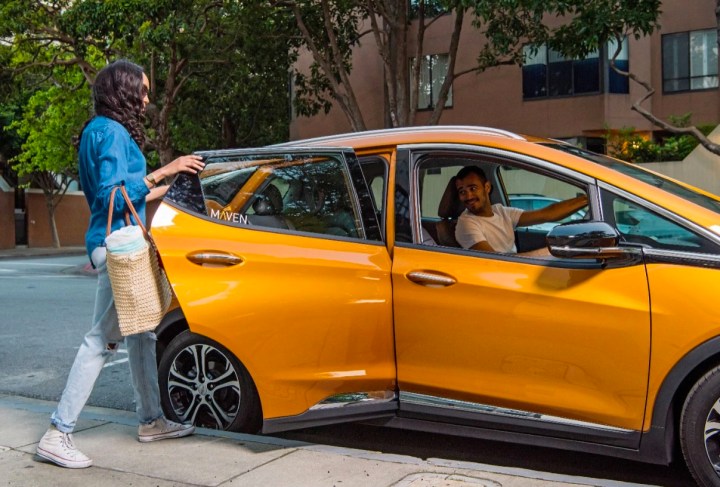
The weekly car-rental service from GM is looking to supply the vehicles for the 21st-century gig economy, in which an increasing number of workers are making a living not at a desk, but rather on the move. Beginning Thursday, freelance drivers — those who drive for ridesharing services or deliver goods for companies like Postmates or GrubHub — will have access to Maven Gig vehicles throughout Los Angeles. Reservations for these cars can be made through the Maven app, which provides potential renters with such information as vehicle availability, pricing, and location. Pickup date and time can also be scheduled through the app.
“Freelancers want freedom and flexibility, and Maven Gig provides both,” GM said in its announcement. The car-rental service allows renters to rent cars when they need them, without the hassle of a long-term lease. So if you only need a car for a week, that’s just fine. The flat weekly fee covers insurance (minus the deductible), unlimited miles, and regular maintenance — all you need to pay for is gas. Prices start at $189 a week plus tax.
The most popular car in the Maven Gig program is the slightly more expensive Chevy Bolt EV, which comes in at $229 plus tax. More than 100 of these electric cars are currently available in LA, and that number is expected to double by the end of 2017. GM claims Maven Gig Bolt EVs have driven 1.4 million all-electric miles in California since February, saving an estimated 50,000 gallons of gas in the process. So not only is this good for the gig economy, but it’s good for the planet, too.
L.A. is the first new launch city for the rental service. Maven Gig will be made available in Boston, Phoenix, Baltimore, and Detroit, and Washington, D.C., in the coming months as well.
“We are committed to bringing Bolt EVs to all Maven Gig markets. Drivers want the Bolt EV because of cost savings, as well as helping with energy and environmental goals,” said Rachel Bhattacharya, chief Growth Officer for Maven. “The freelance economy is growing, and Maven Gig is growing along with it to provide transportation solutions for freelance drivers.”


